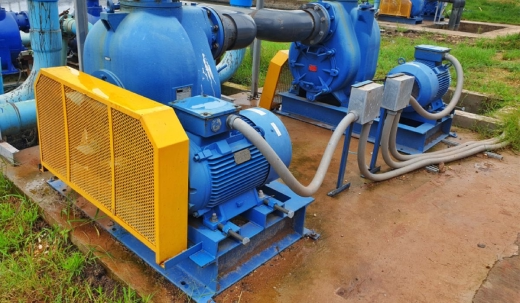

Power transformers often operate in challenging environmental conditions. Additionally, users may not adhere to the prescribed usage guidelines during production, leading to prolonged operation in overload conditions.
The increase in copper losses shortens the transformer’s lifespan. Following the correct operational procedures is essential to enhance the transformer’s longevity.
Regular chromatographic analysis of transformers can promptly reveal surface characteristics indicative of internal faults, allowing timely tracking and reducing maintenance costs. In recent years, with the industrialization and commercialization of electricity usage, efforts have continuously been made to improve the power system’s reliability and quality.
To achieve a significant improvement in power supply reliability, critical enhancements must be made to the three main components of the power grid: power transmission, transformation, and generation. The power grid comprises power transmission, transformation, and generation. To obtain the commonly used 220V voltage in lighting systems, the power goes through a series of transformers in power plants, substations, and distribution centers.
Typically, voltage levels are at 6 kV or 10 kV. Without using step-up transformers for long-distance energy transmission, power loss would be substantial, severely impacting power quality and reliability. To reduce power loss due to impedance in transmission lines, power transformers are used to step up the output voltage of generators.
Despite transformers being essential components, they are not immune to faults. Statistics indicate that transformer faults contribute to 30% of total electrical equipment failures. The diverse nature of transformer faults makes troubleshooting challenging. Often, experienced judgment is required to identify the cause of the fault, and prompt detection and resolution can prolong the transformer’s lifespan, serving as a means to improve power supply reliability.
01. Transformer Applications, Classification, and Operating Principles
I. Transformer Applications
Transformers are static electrical devices that utilize electromagnetic induction to transform alternating voltage or current between two or more windings with the same frequency.
Various electrical devices require different power supply voltages. For instance, common household appliances operate at 220V, while safety lighting uses voltages like 36V, 24V, or 12V, and three-phase AC motors generally require 380V.
From a power system perspective, transformers are indispensable in connecting various power plants and users, requiring transformers of different specifications and capacities to connect different systems.
In practical applications, transformers not only transform voltage but also alter AC current, impedance, and phase.
II. Transformer Classification
Transformers are classified based on different principles, including usage, winding configuration, core structure, phase number, voltage regulation methods, cooling methods, coil structure, and insulation.
III. Transformer Operating Principles
The basic principle of a transformer is electromagnetic induction. For example, a single-phase two-winding transformer operates based on this principle. When a voltage is applied to the primary winding, it induces a current, generating an alternating magnetic flux in the core. This flux, in turn, induces voltages in the secondary windings.
02. Transformer Core Faults
I. Types of Transformer Core Faults
Transformer cores have two basic structures: shell-type and core-type. Their main difference lies in the relative position of the core and windings. Shell-type surrounds the windings, while core-type has the windings surrounded by the core.
Core-type transformers can further be categorized into single-column, double-column, or three-phase multi-column structures, maintaining the core-type characteristics.
II. Core Structure
The clamping of the transformer core is usually in two forms: with screws passing through the core or with strap bands on the core.
Clamping Mechanism: The clamping device ensures the entire transformer core forms a robust structure. It should bear the tension of the core while maintaining contact with the core evenly.
Connection to Ground: Metal structures, including the core, are at a high electric potential in a strong electric field. Proper grounding prevents potential differences between the core and grounded components, reducing the risk of intermittent discharges.
Insulation: Insulation between the clamping device and the core ensures that there is no direct electrical connection. This prevents the formation of potential differences, contributing to stable and safe transformer operation.
Grounding of the Core: Grounding the core is crucial to avoid multiple ground points. By grounding a single silicon steel sheet of the core, the entire core is effectively grounded, preventing the formation of circulating currents.
III. Diagnosis of Transformer Core Faults
Diagnosing core faults is vital due to their impact on transformer performance. Core faults, especially multiple grounding points, can be diagnosed through the following methods:
Oil Sampling and Chromatographic Analysis: Extracting oil samples and subjecting them to gas chromatographic analysis can reveal the presence of characteristic gases like CH4, C2H2, C2H4, and H2, indicating core overheating due to multiple ground faults.
Current Measurement in Grounding Lines: By measuring the current in the grounding lines, one can determine if there are multiple ground points. In normal conditions, the current should be minimal or zero. An increase in current indicates the presence of multiple grounding faults.
AC and DC Methods: The AC method involves applying an AC voltage to the low-voltage winding and measuring the resulting magnetic flux. The DC method applies a DC voltage to the silicon steel sheets and measures the voltage between various levels. If the voltage is zero or the meter indicates reverse, it signifies a fault point.
These diagnostic methods enable timely identification and resolution of transformer core faults, contributing to extended transformer lifespan and improved power supply reliability.




